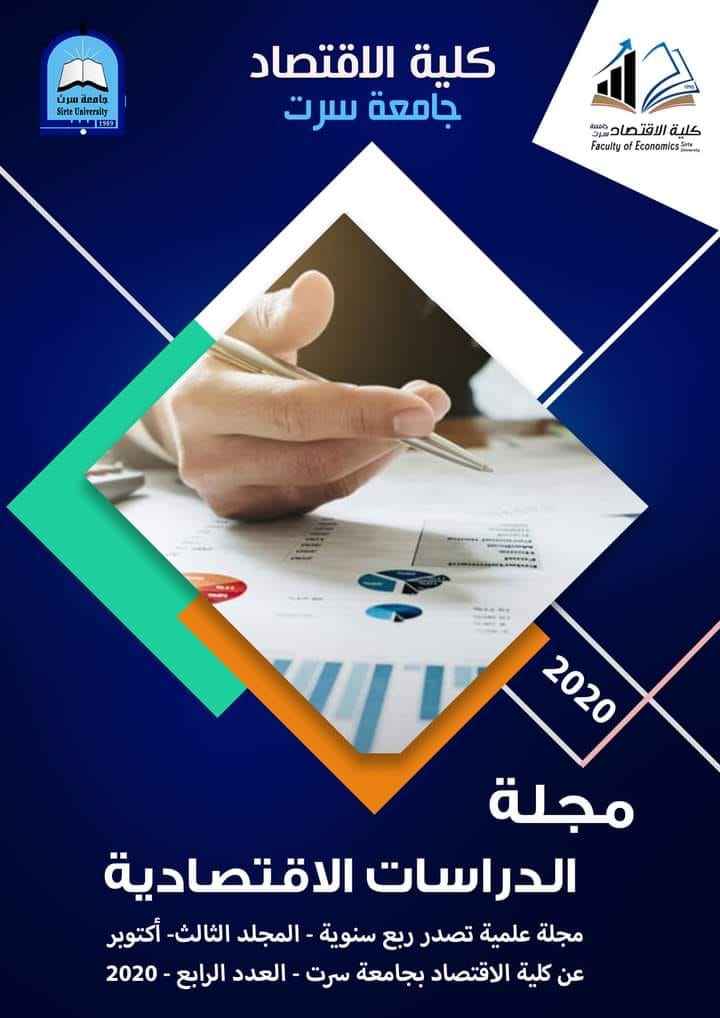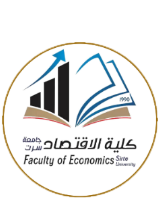نموذج جديد للاقتصاد الكلي مع قياس أثار السياسات الاقتصادية – ليبيا
DOI:
https://doi.org/10.37375/esj.v3i4.2112الكلمات المفتاحية:
نموذج، الاقتصاد الكلي، ليبياالملخص
تعد هذه الدراسة محاولة لتطوير نموذج نظري للاقتصاد الكلي يشمل كل القطاعات الاقتصادية الفعالة في النشتط الاقتصادي الليبي، قادر على تفسير بعض الظواهر التي يتميز بها الاقتصاد الوطني وقادر أيضا على قياس الاثار الاقتصادية الناجمة عن بعض السياسات الاقتصادية التي تبتها السلطات الاقتصادية في إطار مفهوم الإصلاح الاقتصادي، ومن أهم النتائج التي اظهرها النموذج في تقسير وقياس تلك السياسات، بأن فاعلية سياسة فرض رسوم على بيع لنقد الأجنبي للأغراض التجارية والشخصية تتوقف على قدرة المصرف المركزي على تغطية الطلب الكلي على النقد الأجنبي، وهذا مقيد بحجم الصادرات النفطية، وبتالي قد تضطر السلطات الاقتصادية إلى رفع في قيمة الرسوم المفروضة على بيع النقد الأجنبي عند مستويات محدودة من إنخفاض الصادرات النفطية.
كما أظهر نموذج أيضا بأن سياسة فرض الرسوم على مبيعات النقد الأجنبي للأغراضة التجارية والشخصية لها أثر إيجابي على الاقتصاد الوطني، وقد تلعب دور البديل لسياسة تمويل عجز الميزانية العامة بالاقتراض من المصرف المركزي، بينما سياسة فرض رسوم جمركية على الواردات أو الرفع من قيمتها سيكون لها أثار سلبية على الوضع الاقتصادي، في حين سياسة بيع كمية محدودة من النقد الأجنبي إلى أرباب الأسر بسعر الصرف الرسمي لا توفر أي إيرادات لصالح الخزينة العامة ولا تلعب دور البديل في تمول عجز الميزانية العامة، إلا إنها تقدم دعم مباشر لميزانية الأسر وتوفر سيوله نقدية
وختمت الراسة بأن النموذج الاقتصادي يبين ضعف الوضع الاقتصاي، وذلك لإعتماده على الصادرات النفطية وأنه لا مجال للرفع من المستوى الاقتصادي إلا من خلال زيادة الصادرات النفطية المعتمدة على الأسواق العالمية للنفط، وهذا الارتباط يعمق الضعف الذي يتصف به الاقتصاد الليبي، ولفك الارتباط بالصادرات النفطية يجب العمل على تنويع الاقتصاد الليبي
المراجع
- Abuazoum, A. (2016), “Oil price fluctuations and their impact on economic growth in Libya: Econometrics Study (1990 -2010)", Academic Research Journal, No (5), pp 75 - 106.
- Ali, S. (2014), “Determinants of private investment in Libya", Sabha University Journal, No (3), pp 106 – 121.
- Almabrook, R. (2017), “Estimating the demand functions for the foreign trade components in the Libyan economy ", Study submitted to obtain the MSc degree, Sabha University, Sabha –Libya, 2017.
- Edgmand, M. R. “Macroeconomics: theory and policy”, Englewood Cliffs, N.J: Prentice-Hall, (2nd Ed), 1983.
- Elbeydi. K. (2014), “An Empirical Analysis of the Impact of Selected Macroeconomic Variables on Capital Formation in Libya (1970–2010)”, World Academy of Science, Engineering and Technology, No (86) PP 530 – 533.
- Hraib, S. & Taghogh, F. & Hawili, M. (2018), "The monetary stability in the Libyan economy" The second academic conference for economics and business studies, Musrata University, Dec 2018, Musrata – Libya.
- IMF (2007), “Libya: 2006 Article IV Consultation”. IMF Country Report No. 07/149 Washington, D.C: International Monetary Fund.
- Khairy, S. & Alqatous, S. (2018), “An economic analysis of the role of the public budget in achieving sustainable development in Libya", Al-Zawia University, Website: https://zu.edu.ly/university/journal/5c4386807523b762959e5629/research/5e0b4cc1e669f57f91a52d0 b.
- Libyan Audit Bureau (LAB), Annual report (2017), Annual Report, General National Congress (GNC), Tripoli, Libya.
- Shamiya, A. (2006) “Role of State in Economic Activities”, Libyan Organization of Policies and Strategies, Tripoli, Libya. Retrieved from Libyan Organization for Policies and Strategies, Website: http://loopsresearch.org/projects/view/102/?lang=ara
- Twari, N. & Amer, S. (2018), “The role of private investment in economic growth in Libya", Science and Technology Journal (Humanities), No (1), pp 38 – 49.
- Yakhlif, Y. (2016), “Estimating the consumer spending function - using the relative income (RI) hypothesis”, Journal of Economics and Business Studies, No (1), pp 44 - 54.
- Yakhlif, Y. & Sassi, W. (2016), "The relationship between unemployment and inflation in the Libyan economy", Academic Research Journal, No (6), pp 393 – 408.
- Alhasia, M. “The Role of Money in the Libyan Economy: An Analytical and Applied Study", Al-Thawra: printing house, Benghazi – Libya, 1979.




































